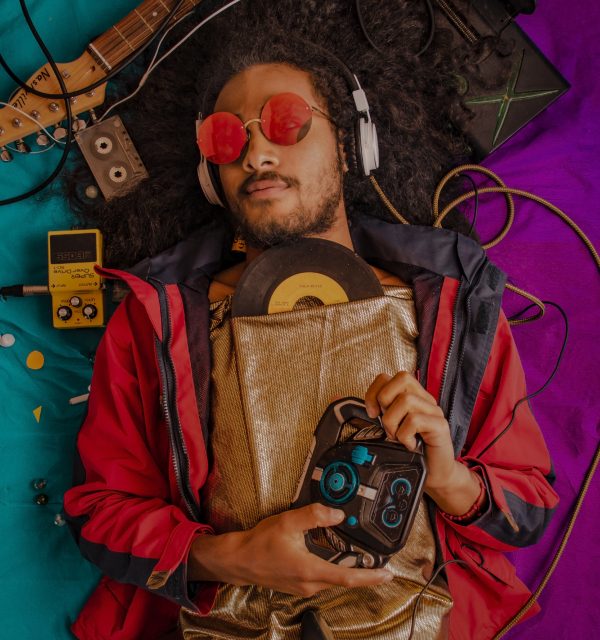“Breaking out of reality and exploring different worlds” is what Alex P. enjoys most about using his virtual reality, or VR, headset. The 12-year-old lives in Strongsville, Ohio.
Darrell M. of Bedford, Texas, enjoys the feeling of being inside game worlds when he plays with a VR headset. He also likes how programs respond to his movements. “The game follows what you do, and that’s really cool,” the 14-year-old says.
“It’s just a lot more immersive than if it were a normal screen,” observes Vincent C., 15, of Bozeman, Mont. VR headsets help make-believe worlds “seems a little more real,” he explains.
Scientists Say: Virtual reality
Virtual reality refers to the artificial 3-D worlds that headsets and linked computer programs let you enter. But VR devices aren’t all fun and games. A new study finds that more than a third of teen VR users have been on the receiving end of one or more types of abuse.
Researchers shared their findings in New Media & Society on October 12.
“These emerging technologies are awesome and are only going to get better, more immersive and more life-changing,” says Sameer Hinduja. But teen and tween users should know about the risks, he adds.
Hinduja is a criminologist at Florida Atlantic University in Boca Raton. He worked on the new study with Justin Patchin. Also a criminologist, Patchin works at the University of Wisconsin–Eau Claire. The two founded the Cyberbullying Research Center, based in Jupiter, Fla.
Teens take VR activities seriously. Here, Nigel Tan celebrated his win over Natalie Tor in the 2023 Olympic Esports competition for virtual taekwondo on June 25, 2023, in their home country of Singapore. Both contestants were 14 at the time. Yong Teck Lim/Staff/Getty Images Sport
VR’s hidden risks
For their study, the pair surveyed a nationwide sample of 5,005 U.S. teens. Roughly one in three who answered said they own a VR headset. That’s similar to what a another survey found last spring. It was conducted by Piper Sandler, a company that conducts market research on various technologies.
About 44 percent of the teens in the new study by Hinduja and Patchin said they had been targeted with hate speech or slurs at least once. Roughly one in 11 said that happened many times.
Among other findings, more than one in three of the teen VR users said they had experienced bullying or harassment. More than four in every 10 teen VR users reported trolling. Trolls are people who make nasty or inflammatory comments online.
Experiences in virtual reality aren’t always delightful. Online hate, bullying and trolling are just a few risks teens reported experiencing. They had been surveyed as part of a study by researchers at the Cyberbullying Research Center.izusek/E+/Getty Images Plus
And that’s not all. More than one-sixth of teen VR users had faced sexual harassment. Girls were targeted more than boys. And almost one in every four had been catfished. In other words, someone impersonated a teen or someone else to deceive their target.
Similar types of abuse happen on social media. But it’s difficult to compare the two types of online experiences, Hinduja says. The immersive nature of virtual reality environments, he suggests, might boost teens’ emotional responses to abuse.
“Also, users often feel a strong connection and sense of identity … with the avatars they carefully construct,” he says. So abuse of your virtual character, he worries, might hit harder than text comments on a social-media post.
Protecting yourself
Both boys and girls in the study sometimes removed themselves from a virtual world if others there were abusive. Girls were more likely than boys to pick a specific avatar to avoid harassment. Girls also were more likely to set boundaries for the personal space around their avatar. Overall, though, teens didn’t use such steps often.
Most teens did not report experiencing the types of abuse the researchers asked about. Still, it’s still important to take basic safety steps, the team says.
“You should take the time to learn how you can quickly and easily block, remote and mute other users,” Hinduja says. Learn how to set virtual boundaries. And know how to report any abuse by other players. The person acting badly won’t find out who you are, he notes.
Also, identify at least one trusted adult you can talk with if abuse does occur, Hinduja says. They can help if you’re not sure how to deal with an online problem.
This new study “is one of the first to assess harassment experiences in the VR world” — and how teens can protect themselves, says Linda Charmaraman. She heads the Youth, Media & Wellbeing Lab at Wellesley Centers for Women in Massachusetts. “Future research,” she says, “might focus on how much these behaviors actually distress young people.” The findings could help parents, safety programs and VR content creators develop better ways to keep users safe.
Vincent, Alex and Darrell all pay attention to the age guidelines for games. Alex works with his parents to decide which ones are appropriate for him. Vincent usually plays games only with people he knows.
“Always be vigilant when using any device and exploring any online space,” Hinduja says. Don’t assume harm can’t happen to you. And make use of the programs’ safety settings. “Those features,” he emphasizes, “are there for you to use to control your online experience.” Indeed, he adds, they’ve been designed to “ensure that it remains safe, comfortable and fun for you.”
Do you have a science question? We can help!
Submit your question here, and we might answer it an upcoming issue of Science News Explores

















